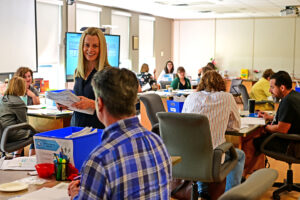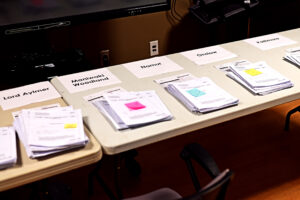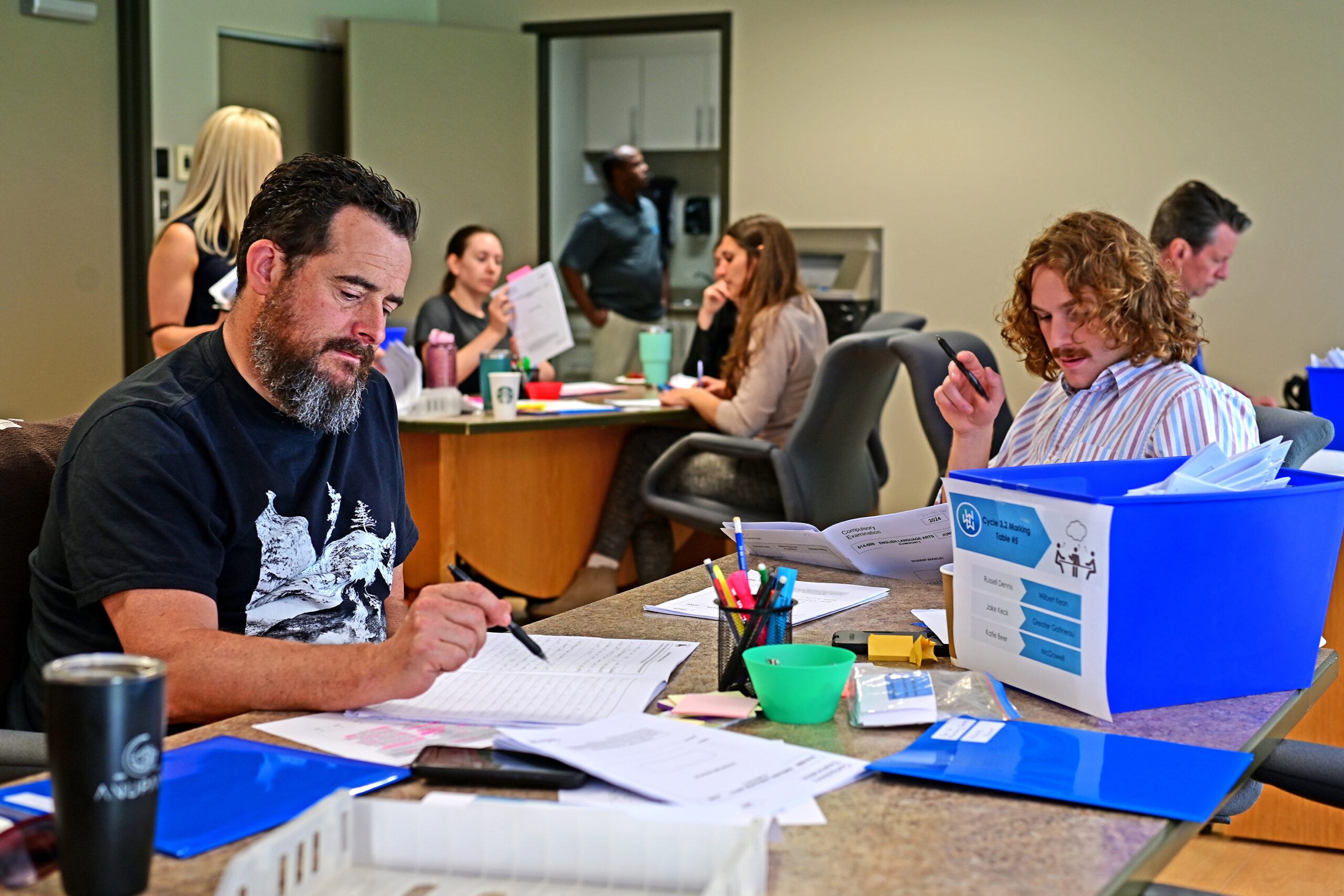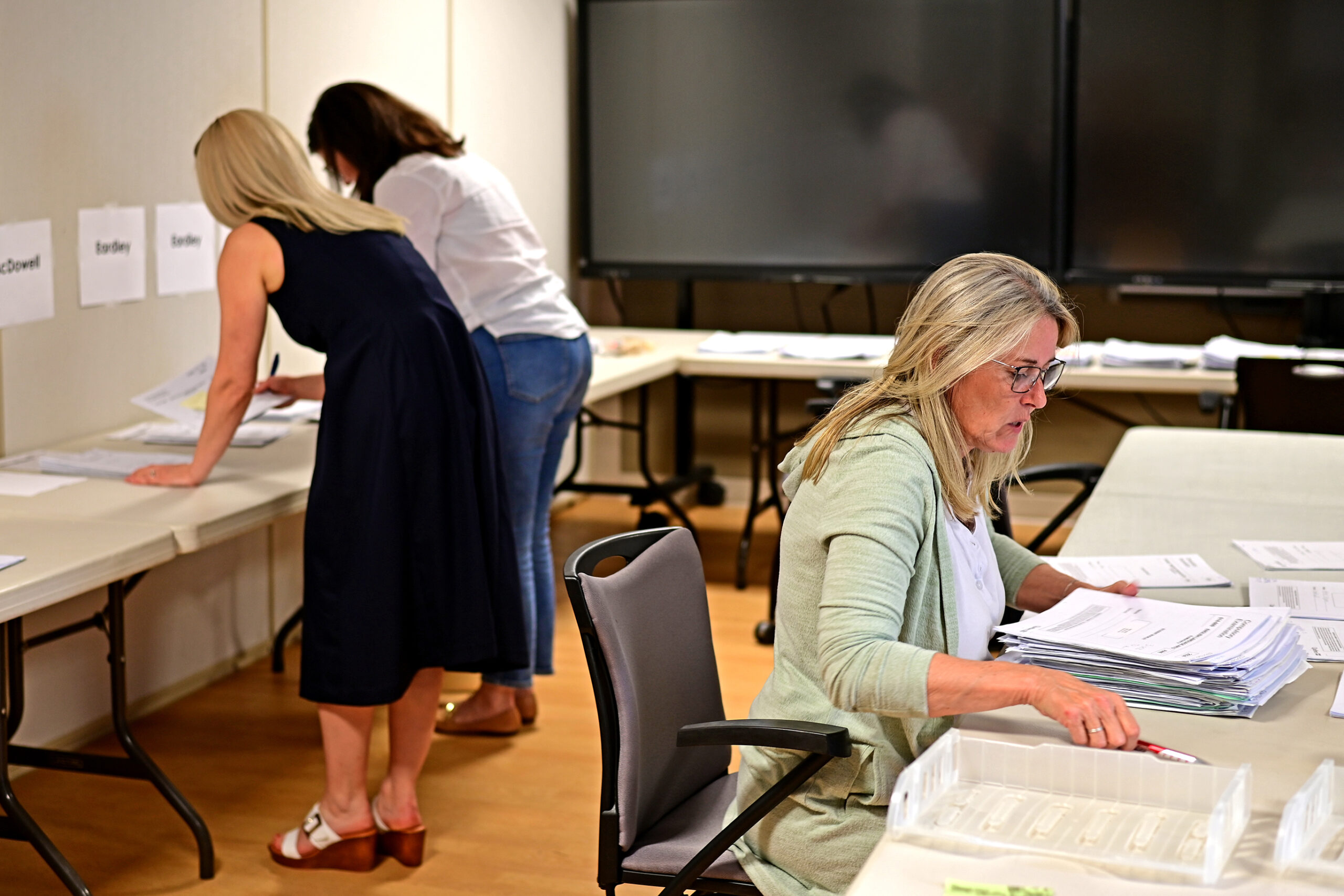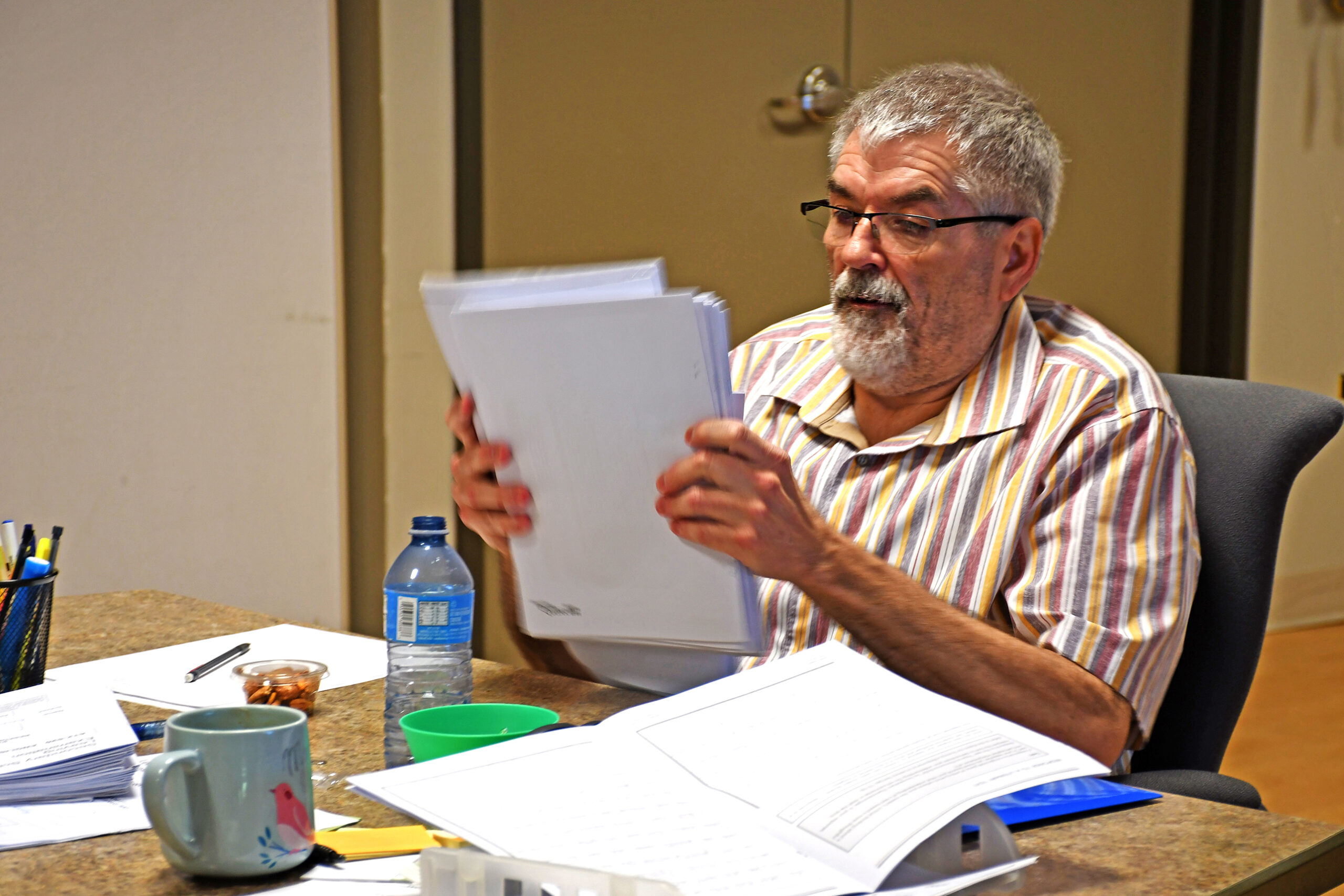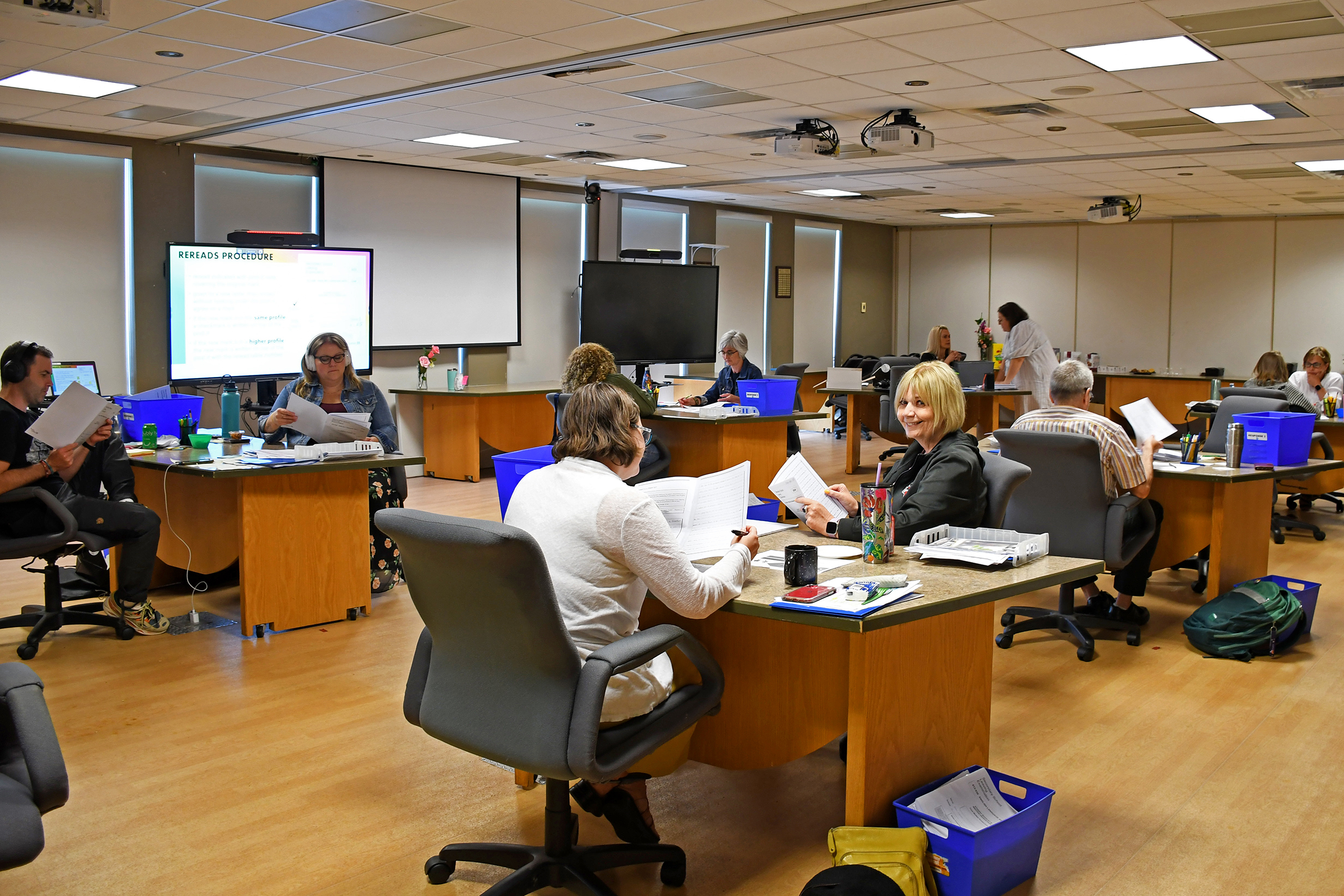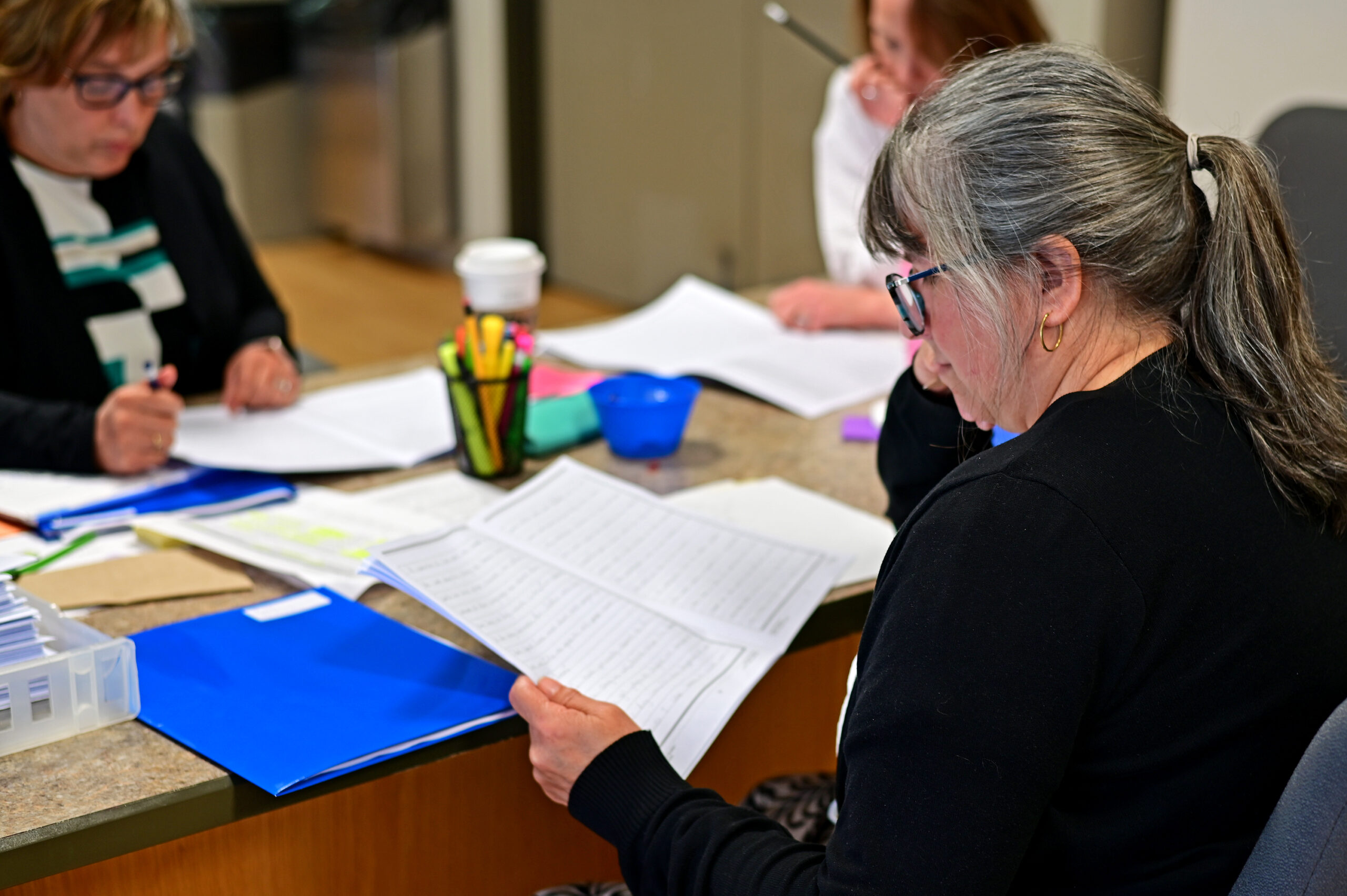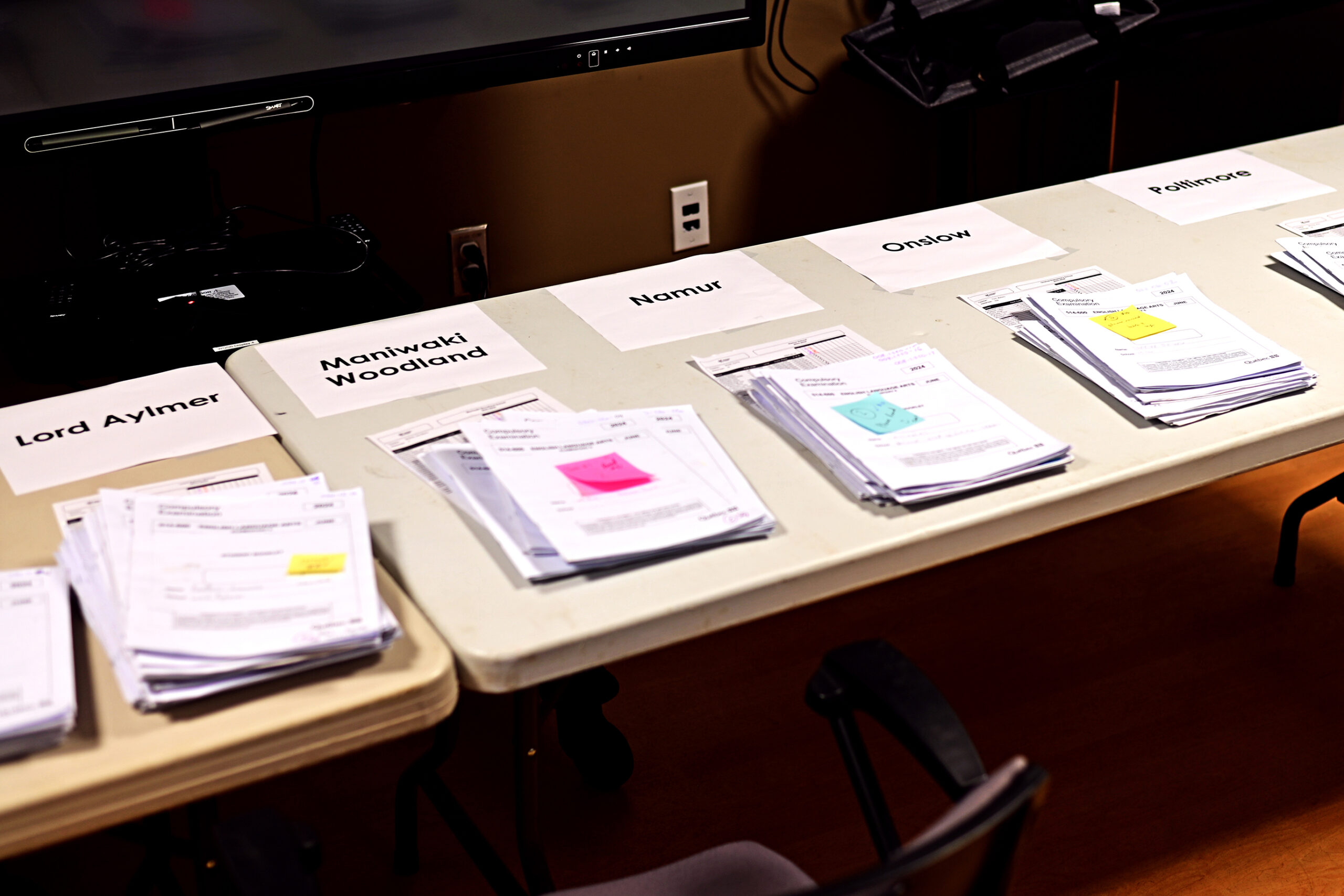
Centralized marking of the English Language Arts (ELA) ministry exams has been practiced for over a decade at the Western Québec School Board. Marking in teacher triads or pairs not only ensures equitable marking practices for students, but also provides teachers with a second or third opinion, which is helpful in a subject such as ELA where marking can occasionally feel subjective.
This style of marking occurs for both the Grade 6 and Secondary V (Grade 11) ELA ministry exams. Currently the Grade 6 marking centre takes place over one day centrally at the school board where teachers mark the reading competency of the exam. The writing portion is then marked independently in schools, often with teachers marking in school teams or even getting together with nearby local schools. Support is offered by the ELA consultant for narrative marking which teachers complete independently. Schools located at a significant distance from the school board come together to mark their papers led by an ELA consultant.
Conversely, the Secondary V marking centre takes place over five days in person at the school board. This is common practice in all boards and financial support is provided by the provincial Directors of English Education (DEEN) committee.
At a typical marking centre, exams are carefully identified then combined and distributed evenly amongst triad or duo marking groups. This ensures that each marking team has a random sampling of papers from each school in our board. It also helps teachers to mark objectively by reducing, or at times eliminating, their chances of marking their own students’ papers.



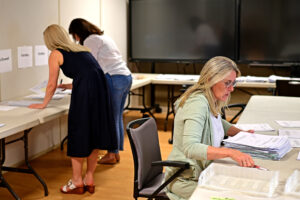
For Grade 6, all papers that receive a failing grade are reread to receive a second opinion from another marking group. For Sec. V, all papers that receive a failing grade, or that receive a mark more than 10% lower than their term 3 class mark, are reread (without indication of the previous group’s mark) to receive a second opinion from another marking group.
Most often, marking teams agree on the score, however, if there is a discrepancy, there is a third checks and balances procedure. Such papers are reread a third time by an ELA consultant who will discuss their final decision with teachers involved. “We have kept detailed data around this “reread” procedure and have found that, over the years, teacher marking has become more in line with each other, giving both teachers and administrators reassurance in the reliability of exam marks,” shares ELA consultant Larissa Sansom.
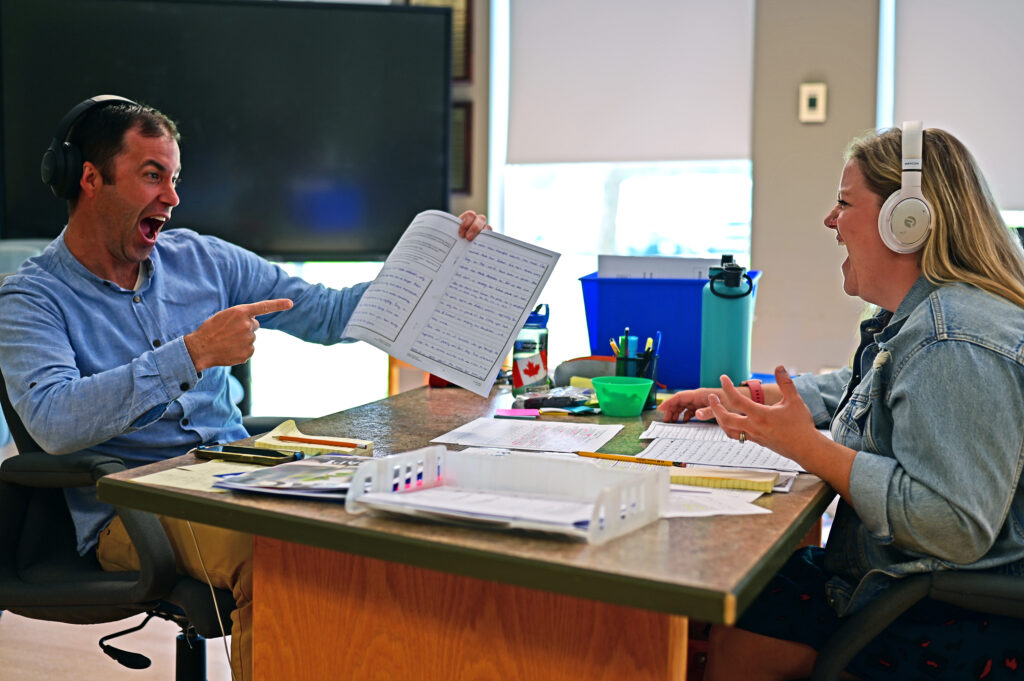
To mark the Grade 6 ELA exam, teachers require an “Anchor Package”. This is a collection of exam papers that fall into different levels of achievement (Levels 1-5 on the exam rubric). This package is created by the provincial Language Arts Network (LAN) in cooperation with the nine English school boards in Québec.
Sample exams are collected from across the province, representing diverse student populations. These samples are marked by a central marking team comprised of three school boards and includes teachers and consultants from each board. Participating school boards rotate each year. Creating these packages is a monumental task which takes place under a tight timeline to ensure school boards receive them before their scheduled marking centres.
This year, two schools from the WQSB, Eardley and Wakefield Elementary, participated in creating the Grade 6 anchor. Their Grade 6 students are represented within this anchor package which becomes a valuable and much needed resource for teachers to continually refer to, using selected papers as models with students.
The ELA marking centres are a cherished tradition for many teachers. They play a valuable role in teacher PD, with teachers often saying that marking centres are the best PD they have ever received. They provide an opportunity for teachers across the board to unite, meet one another, mark alongside teachers from a variety of different schools (urban & rural) and obtain that reassurance that they are on the same page. For a small school with only one teacher in the grade, this is critically important in ensuring equitable and reliable marking practices across our school board and province.
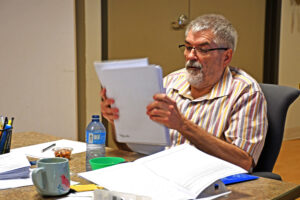
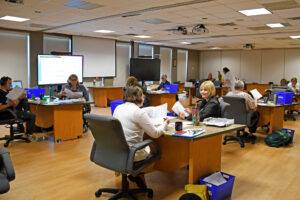

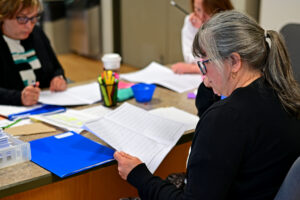
Though teachers are busy with no time to spare, ELA consultants and administrative technicians hosting the marking centre bring a sense of fun and collegiality to the experience. Lunchtime games such as “Two Truths and a Lie” or “Guess whose baby photo this is” bring teachers closer together as a community. They also provide quick and fun activities for teachers as they get to know one another and share best practices, “Strategy Ranking Ladder,” or for when they need a break from marking – think Wordle, Fridge Magnet Poetry and more.
It is guaranteed that marking centres are a great deal of hard work for teachers, but most look forward to participating in them. Professional growth stems from collaborative opportunities to share, feel challenged and reflect on best practices, and this is at the heart of each Western Québec School Board marking centre.
Special thank you to administrative technician Wendy Wesley for inspiring this story, and for the collaborative writing efforts of ELA consultants Larissa Sansom and Sarah Kobia in the creation of this article.


